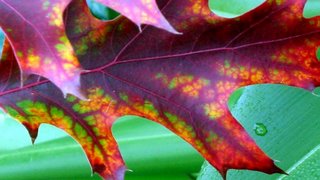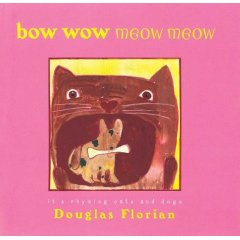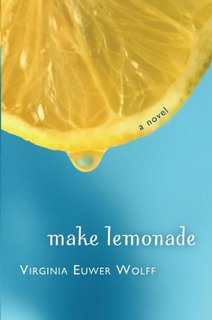
Book Review: AN AMERICAN PLAGUE
NOTE: This book review was created for a class at TWU
1. BIBLIOGRAPHY:
Murphy, Jim. 2003. AN AMERICAN PLAGUE. New York, NY: Clarion Books. ISBN 0395776082
2. PLOT SUMMARY:
AN AMERICAN PLAGUE tells the story of the Philadelphia Yellow Fever epidemic of 1793, from the very first days in August, before the citizens of the city of brotherly love realized that a dreaded disease was in their midst, to the late October days of the city's recovery. The story is told in narrative style through the eyes of the citizens who suffered, died, or survived. The final two chapters are devoted to the history of changes in the plague's aftermath, to the discovery of yellow fever's carrier, the mosquito in the early 1900s.
3. CRITICAL ANALYSIS:
For many students, just the thought of reading a non-fiction title about early American history can cause symptoms similar to those described in AN AMERICAN PLAGUE. Said pupil, when confronted by such a task may feel feverish, "depressed, confused, and delirious." Yet even the most non-fictionophobic reader would find his or her aversion to informational texts disappear by the end of the first paragraph of Jim Murphy's wonderful retelling of the events during the Philadelphia yellow fever epidemic of 1793.
Although the book is highly accurate and meticulously researched and documented, AN AMERICAN PLAGUE reads like a historical mystery novel. Witness the following excerpts from the first page: "Saturday, August 3, 1793. The sun came up, as it had every day since the end of May, bright, hot, and unrelenting. The swamps and marshes south of Philadelphia had already lost a great deal of water...Dead fish and gooey vegetable matter exposed and rotted...Mosquitoes were everywhere, though their high pitched whirring was particularly loud near rain barrels, gutters, and open sewers." The book begins like a journal entry, and within a few short lines, the reader is immersed in the time period and setting. Murphy has even introduced the prime suspect in the mystery - the mosquito.
Once the reader has been drawn in to his tale, the author then supplies fascinating facts, explaining the 18th century sewer system that used open gutters and "sinks" to remove waste, and describing in vivid detail the symptoms of the yellow fever victim. Accompanying the text throughout the book are engravings, excerpts from newspapers, maps, advertisements, cartoons, and portraits.
Accuracy is not sacrificed for imagery, however, and Murphy uses precise language where needed. He describes the last stage of the yellow fever patient thusly, "The skin and eyeballs turned yellow, as red blood cells were destroyed, causing the bile pigment bilirubin to accumulate in the body; nose, gums, and intestines began bleeding; and the patient vomited stale, black blood." If the author had "dumbed-down" the description and left it at "The patient vomited black blood," it would not only be less informative, but less interesting as well.
Each chapter of AN AMERICAN PLAGUE begins with a similar journal-like entry, building upon a cast of characters, from Dr. Rush, whose early warnings were ignored, to Reverend Helmuth, who visited stricken patients throughout the city. Murphy's narrative is interspersed with quotes from such eyewitnesses, providing not only fascinating details, but also different perspectives on those terrible months in 1793.
Throughout the book, the questions of what caused the yellow fever, how it spread, and how another epidemic could be prevented, flow beneath the unfolding events. Like Philadelphia citizen Dr. Rush, the reader looks for clues in every eyewitness's story, until finally, at the end of the book, Murphy narrates how, in the early 1900s, doctors discovered that yellow fever was a mosquito borne virus. The mystery solved, it still took almost 40 years to come up with a vaccine, and many more years to make government changes to help prevent another epidemic. Indeed, AN AMERICAN PLAGUE brings us almost up to the present, connecting real world current health threats with the yellow fever threat of over 200 years ago.
AN AMERICAN PLAGUE has won numerous awards, including the Robert F. Sibert Award for outstanding non-fiction. Like all of Jim Murphy's books, it was born out of his curiosity and developed through research into a wonderful narrative about a terrible disaster. In his acceptance speech for the Horn Book Award, Murphy said that, "Writing about any disaster provides a natural story line with a beginning, middle, and end, but readers deserve more. Broader historical issues, odd and intriguing characters, and humor, to name a few." In AN AMERICAN PLAGUE Murphy provides everything the readers deserve, including the cure for non-fictionophobia.
4. REVIEW EXCERPT(S)
School Library Journal: "Black-and-white reproductions of period art, coupled with chapter headings that face full-page copies of newspaper articles of the time, help bring this dreadful episode to life. An afterword explains the yellow fever phenomenon, its causes, and contemporary outbreaks, and source notes are extensive and interesting. Pair this work with Laurie Halse Anderson's wonderful novel Fever 1793 (S & S, 2000) and you'll have students hooked on history."
Booklist: "History, science, politics, and public health come together in this dramatic account of the disastrous yellow fever epidemic that hit the nation's capital more than 200 years ago. Drawing on firsthand accounts, medical and non-medical, Murphy re-creates the fear and panic in the infected city, the social conditions that caused the disease to spread, and the arguments about causes and cures."
5. CONNECTIONS
*Science: After reading AN AMERICAN PLAGUE, students could tackle questions of world health and mosquito-borne diseases such as yellow fever, malaria, and the West Nile virus. Students could watch program four "Deadly Messengers" of PBS's award-winning series "Rx for Survival" and role play how disease spreads. Following the role play, students brainstorm ways to halt the spread of disease in a global economy. Use the lesson that accompanies the program for guidance: http://www.pbs.org/wgbh/rxforsurvival/series/teachers/pdf/rx_guide_messengers.pdf
*Language Arts/US History: Use exerpts from AN AMERICAN PLAGUE along with selections from Laurie Halse Anderson's novel FEVER 1793 (ISBN 0689848919), parts of the recently published treatise on how yellow fever could be used as a biological weapon, entitled YELLOW FEVER: A DEADLY DISEASE POISED TO KILL AGAIN (ISBN 1591023998) by James Dickerson, Henry Wadsworth Longfellow's "Evangeline," Phillip Freneau's short poem "Pestilence" written in 1793 (http://xroads.virginia.edu/~MA96/forrest/WW/feverlit.html), and "Ye Heroes of Ye Epidemic" a long narrative poem written about a Florida yellow fever epidemic in 1888 (http://fulltext10.fcla.edu/DLData/NF/NF00000039/file2.pdf), to learn more about America's early history, and about how one topic, yellow fever, can be described from different points of view and for different purposes. Students could then research another event in early American history, such as the Salem Witch Trials, and try their hand at writing a nonfiction chapter, a short story, poetry, or a modern day take on that event.
* Jim Murphy's acceptance speech for the Horn Book Award is hilarious and enlightening. It would be a wonderful way to begin a discussion of how to write nonfiction and/or what it means to be a writer. The transcript can be found at: http://www.hbook.com/publications/magazine/articles/jan05_murphy.asp





